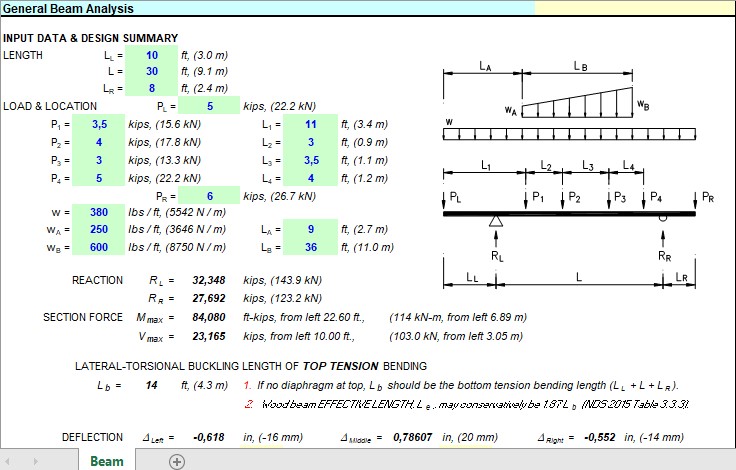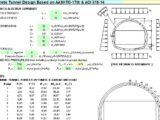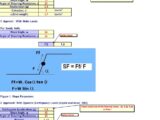
General Beam Analysis and Calculation Spreadsheet
2 January 2025Table of Contents
General Beam Analysis and Calculation Spreadsheet
Beam analysis is a fundamental aspect of structural engineering, mechanical design, and architecture. Whether you’re designing bridges, buildings, or machinery, understanding how beams perform under various loads and conditions is crucial for creating safe and efficient structures. This article will delve into the basics of beam analysis, its importance, and the methods used to perform it, ensuring your next project stands strong.
What Is Beam Analysis?
Beam analysis refers to the evaluation of a beam’s structural behavior under applied forces, moments, and loads. Beams are structural elements designed to resist bending, shear, and axial forces. They are commonly used in construction, machinery, and other engineering applications to support loads over spans.
Key considerations in beam analysis include:
- Material properties: Understanding the strength, elasticity, and density of the material.
- Cross-sectional geometry: The shape and size of the beam’s cross-section affect its load-bearing capacity.
- Boundary conditions: Fixed, pinned, or free ends impact how the beam reacts to loads.
- Loading conditions: Types of loads, such as point loads, distributed loads, and moments, determine the beam’s response.
Importance of Beam Analysis
Beam analysis is essential for several reasons:
- Safety: Proper analysis ensures structures can withstand anticipated loads, preventing failures that could endanger lives.
- Efficiency: Understanding beam behavior allows for optimized material usage, reducing costs without compromising safety.
- Durability: Accurate analysis predicts how beams will perform over time, considering factors like fatigue and environmental effects.
- Regulatory Compliance: Most construction and engineering projects must adhere to strict safety and performance standards.
Types of Beams and Their Applications
Different types of beams are used depending on the application and load requirements:
- Simply Supported Beam: Supported at both ends, it is common in bridges and small-span structures.
- Cantilever Beam: Fixed at one end and free at the other, often used in balconies and overhangs.
- Continuous Beam: Extends over multiple supports, providing greater load distribution.
- Fixed Beam: Rigidly fixed at both ends, offering high resistance to deformation.
Methods of Beam Analysis
Several methods are employed to analyze beams, each with its advantages and applications:
1. Analytical Methods
- Equilibrium Equations: Involves resolving forces and moments to ensure static equilibrium.
- Bending Moment and Shear Force Diagrams: Graphical representation of how internal forces vary along the length of the beam.
- Deflection Analysis: Determines how much a beam will bend under a given load, using methods like double integration or Macaulay’s method.
2. Numerical Methods
- Finite Element Analysis (FEA): A powerful computational method that divides the beam into smaller elements for detailed stress and strain analysis.
- Matrix Methods: Used for analyzing complex structures by representing them as a system of linear equations.
3. Empirical Methods
- Based on experimental data, these methods are often used for materials and geometries that defy straightforward analysis.
Tools for Beam Analysis
Engineers use various tools for beam analysis, ranging from traditional methods to advanced software:
- Manual Calculations: Useful for simple beams and educational purposes.
- Software Solutions: Tools like ANSYS, SAP2000, and SolidWorks streamline the process for complex designs.
- Online Calculators: Quick, accessible options for preliminary assessments.
Common Challenges in Beam Analysis
Beam analysis comes with its set of challenges, including:
- Complex Loading Conditions: Irregular or dynamic loads can complicate calculations.
- Material Anomalies: Variations in material properties may lead to unexpected performance.
- Boundary Condition Assumptions: Incorrect assumptions can result in inaccurate predictions.
Best Practices for Beam Analysis
- Understand the Context: Always consider the purpose and environment of the structure.
- Verify Assumptions: Ensure your material and loading assumptions align with real-world conditions.
- Use Reliable Tools: Choose analysis methods and software suitable for your project’s complexity.
- Consult Experts: When in doubt, collaborate with experienced engineers or use peer-reviewed resources.
Conclusion
Beam analysis is a cornerstone of structural and mechanical design. By understanding the principles, methods, and tools involved, engineers can create structures that are not only strong and safe but also cost-effective and durable


